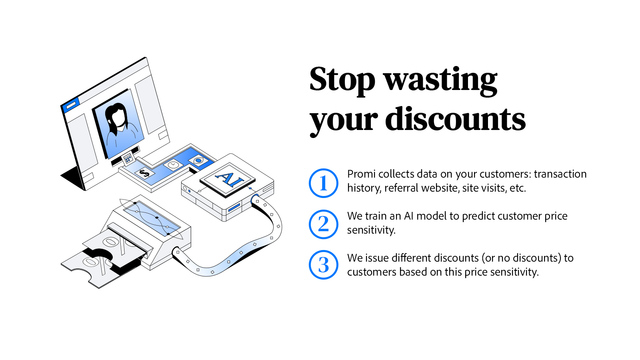A/B testing is a crucial practice for e-commerce success. By systematically testing different elements on your website, you can optimize your online store to significantly improve conversions and increase revenue. In this ultimate guide, we will walk you through the fundamentals of A/B testing, provide guidance on setting up your testing framework, offer tips for developing strong testing hypotheses, guide you through the implementation process, and help you analyze A/B testing results effectively.
Understanding the Basics of A/B Testing
Before diving into the intricacies of A/B testing, it's important to understand what it entails. A/B testing, also known as split testing, involves comparing two versions of a webpage or element to determine which one performs better. The purpose is to evaluate changes in variables like layout, content, design, or calls-to-action to determine the optimal combination for achieving your desired goals.
A/B testing is a powerful tool used by marketers and web developers to refine and enhance the performance of websites and digital assets. By systematically testing variations and analyzing user behavior, businesses can make data-driven decisions to improve conversion rates and overall user experience. This iterative process of testing and optimization is crucial in today's competitive online landscape, where small tweaks can lead to significant improvements in key metrics.
What is A/B Testing?
A/B testing is the process of comparing two versions of a webpage or element to understand which one yields better results. By creating two variants, A and B, and exposing each to a segment of your website's traffic, you can analyze user behavior and determine which version performs better. A/B testing provides data-backed insights that enable you to make informed decisions about optimizing your website for conversions.
Through A/B testing, businesses can gain valuable insights into user preferences, behavior patterns, and the effectiveness of different design elements. By testing variables such as headlines, images, button colors, and layout structures, organizations can uncover hidden opportunities for improvement and innovation. This methodical approach to experimentation fosters a culture of continuous learning and adaptation, driving sustainable growth and competitiveness in the digital realm.
Importance of A/B Testing in Ecommerce
For e-commerce businesses, A/B testing is vital as it directly impacts conversions and revenue. By understanding what changes resonate with your audience and generate more engagement or purchases, you can fine-tune your website to deliver an optimized user experience. A/B testing allows you to identify and address pain points, increase customer satisfaction, and ultimately boost your bottom line.
In the realm of e-commerce, where every click and interaction can make a difference, A/B testing serves as a strategic tool for maximizing performance and profitability. By testing various elements of the online shopping experience, such as product pages, checkout processes, and promotional offers, businesses can tailor their digital storefront to meet the evolving needs and preferences of their target audience. This proactive approach to optimization not only enhances the customer journey but also cultivates brand loyalty and long-term success in the competitive e-commerce landscape.
Setting Up Your A/B Testing Framework
Having a solid framework in place is essential to ensure the success of your A/B testing efforts. Here are two critical steps to get you started:
Before diving into the world of A/B testing, it's crucial to understand the significance of statistical significance. This statistical concept helps you determine whether the differences observed in your test results are due to actual variations or simply random chance. By setting a confidence level and sample size upfront, you can ensure that your test results are reliable and actionable.
Identifying Your Testing Goals
Clearly defining your testing goals is the first step towards a successful A/B testing campaign. Are you looking to increase click-through rates, reduce bounce rates, improve conversion rates, or enhance user engagement? By pinpointing precisely what you want to achieve, you can design experiments that align with your objectives and track the right metrics to measure success.
Moreover, understanding your target audience is key to crafting effective A/B tests. Conducting thorough user research and segmentation can provide valuable insights into user behavior, preferences, and pain points. By tailoring your experiments to different audience segments, you can uncover nuanced insights that drive meaningful improvements in your conversion rates.
Selecting the Right Tools for A/B Testing
Having the right tools in your arsenal can make or break your A/B testing endeavors. There are numerous A/B testing tools available, ranging from easy-to-use platforms tailored for beginners to powerful solutions for advanced testing. Consider factors such as ease of use, integration capabilities, statistical power, and data analysis features when selecting the tool that best fits your business needs.
Furthermore, it's essential to establish a robust testing infrastructure to support your A/B testing initiatives. This includes setting up proper tracking mechanisms, defining key performance indicators (KPIs), and implementing a structured testing roadmap. By building a strong foundation for your testing framework, you can streamline the testing process, iterate efficiently, and drive continuous optimization across your digital properties.
Developing a Hypothesis for A/B Testing
A well-crafted hypothesis is the foundation of a successful A/B testing experiment. It outlines the objective of your test, the anticipated outcome, and the changes you aim to make. Here's how you can create a strong hypothesis:
Understanding the Role of Hypothesis in A/B Testing
A hypothesis serves as the driving force behind your A/B testing experiments. It helps you define the problem, identify the variables to test, and set expectations for the outcome. By formulating a clear hypothesis, you can focus your efforts and gather meaningful data to inform your decision-making process.
When embarking on an A/B testing journey, it's crucial to understand that a hypothesis is not just a random guess; it's a well-thought-out statement that guides your experimentation process. It acts as a roadmap, steering you towards valuable insights about user behavior and preferences. By investing time in crafting a robust hypothesis, you lay a solid groundwork for deriving actionable conclusions from your A/B tests.
Tips for Creating a Strong Hypothesis
When constructing your hypothesis, keep in mind the following tips:
- State a clear objective: Clearly define what you want to achieve through your A/B test.
- Identify variables: Determine the elements you intend to change and test.
- Predict an outcome: Based on your changes, anticipate the expected impact on user behavior or conversion rates.
By following these guidelines, you can create a hypothesis that guides your A/B testing experiment effectively.
Implementing A/B Testing on Your Ecommerce Website
With your testing goals and hypothesis in place, it's time to implement A/B testing on your e-commerce website. Here, we break down the process into steps:
Steps to Conduct A/B Testing
1. Identify the element to test: Choose the webpage or element that you want to optimize.
2. Create two variants: Develop an alternative version of that webpage or element (Variant B).
3. Assign traffic: Split your website's traffic, directing a portion to each variant.
4. Run the experiment: Allow each variant to run for a defined period, collecting data on user interactions.
5. Analyze results: Compare the performance of each variant using key metrics and statistical analysis.
6. Draw conclusions: Based on the data and insights gathered, draw conclusions on the success of the test.
7. Implement changes: If the alternative variant outperforms the original, apply the changes to your website.
Common Pitfalls to Avoid During Implementation
While implementing A/B testing, beware of these common pitfalls:
- Testing too many variables at once can make it difficult to pinpoint the cause of any observed differences in performance.
- Not running experiments for a sufficient duration can result in inconclusive or inaccurate results.
- Not segmenting visitors and analyzing results separately for different user groups can lead to misleading conclusions.
- Relying solely on traditional statistical significance thresholds without considering practical significance can limit the effectiveness of your tests.
By avoiding these pitfalls, you can ensure that your A/B testing implementation delivers reliable and actionable insights.
Analyzing A/B Testing Results
After running your A/B test, the next step is to analyze the results and draw meaningful conclusions. Here are some key metrics to consider:
Key Metrics to Consider
1. Conversion rate: Measure the percentage of visitors who completed a desired action, such as making a purchase or submitting a form.
2. Click-through rate: Evaluate the percentage of visitors who clicked on a specific link or element.
3. Bounce rate: Assess the percentage of visitors who leave your website after viewing only one page.
4. Average session duration: Determine the average time visitors spend on your website.
By analyzing these metrics for both variants, you can gain insights into which version performs better and make informed decisions about optimization.
Interpreting the Results of A/B Testing
When interpreting A/B testing results, it's essential to consider statistical significance, practical significance, and the overall impact on your business goals. Statistical significance helps determine if the observed differences are statistically significant, while practical significance helps assess if the differences are practically meaningful. By combining these factors and considering your business objectives, you can decide whether to implement the changes suggested by the A/B test.
In conclusion, A/B testing is a powerful methodology that can drive significant improvements in e-commerce performance. By understanding the basics, setting up a solid framework, developing strong hypotheses, effectively implementing tests, and analyzing results, you can unlock the full potential of A/B testing to skyrocket your e-commerce success. Start optimizing your website today and let data guide your decisions!
Ready to take your Shopify store to the next level after mastering A/B testing? Let Owlfred, your wise companion from OwlMix, guide you to the perfect tools for success. Explore our extensive Shopify apps directory and uncover innovative solutions tailored to your business needs. Whether it's boosting sales, optimizing operations, or enhancing your store's design, the right app is just a click away. Find your next Shopify app with OwlMix and elevate your e-commerce experience today!

















